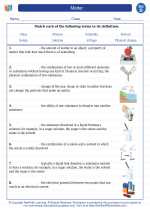Key Concepts in Quantum Mechanics
Wave-Particle Duality
In quantum mechanics, particles like electrons and photons exhibit both wave-like and particle-like behavior. This duality is a fundamental aspect of quantum theory and is essential for understanding the behavior of particles at the quantum level.
Quantization
Quantization is the concept that certain physical properties, such as energy and angular momentum, can only take on discrete, or quantized, values. This is in contrast to classical physics, where these properties are continuous.
Uncertainty Principle
The uncertainty principle, formulated by Werner Heisenberg, states that it is impossible to simultaneously know the exact position and momentum of a particle. This principle places fundamental limits on the precision with which certain pairs of physical properties can be known.
Quantum Superposition
Quantum superposition is the principle that a quantum system can exist in multiple states or positions simultaneously. This is often illustrated through the famous thought experiment of Schrödinger's cat, where the cat is both alive and dead until observed.
Quantum Entanglement
Quantum entanglement is a phenomenon in which the quantum states of two or more particles become correlated in such a way that the state of one particle is instantly linked to the state of another, regardless of the distance between them.
Important Figures in Quantum Mechanics
Max Planck
Max Planck is known for his discovery of the quantization of energy, which led to the development of quantum theory. He introduced the concept of quantized energy packets, or "quanta," which revolutionized our understanding of the behavior of energy at the atomic level.
Albert Einstein
Albert Einstein made significant contributions to quantum theory, particularly with his explanation of the photoelectric effect, for which he was awarded the Nobel Prize in Physics in 1921. His work on the wave-particle duality of light laid the groundwork for the development of quantum mechanics.
Niels Bohr
Niels Bohr developed the Bohr model of the atom, which incorporated the quantization of electron orbits around the atomic nucleus. His model provided a framework for understanding the discrete energy levels of atoms, which was a crucial step in the development of quantum mechanics.
Erwin Schrödinger
Erwin Schrödinger is renowned for his development of wave mechanics, a fundamental formulation of quantum theory. His famous wave equation, known as the Schrödinger equation, describes how the quantum state of a physical system changes over time.
Werner Heisenberg
Werner Heisenberg formulated the uncertainty principle, which fundamentally altered our understanding of the precision with which certain pairs of physical properties can be known. His work on matrix mechanics provided a mathematical framework for understanding the behavior of quantum systems.
Applications of Quantum Mechanics
Quantum Computing
Quantum computing utilizes the principles of quantum mechanics to process and store information in ways that are fundamentally different from classical computing. Quantum computers have the potential to solve certain types of problems much more efficiently than classical computers.
Quantum Cryptography
Quantum cryptography uses quantum mechanics to create secure communication channels that are theoretically immune to eavesdropping. This is based on the principles of quantum entanglement and the uncertainty principle.
Quantum Teleportation
Quantum teleportation is a process that uses quantum entanglement to transfer the quantum state of a particle from one location to another, without physically moving the particle itself. This has potential applications in quantum communication and computing.
Quantum Sensing and Metrology
Quantum mechanics has enabled the development of ultra-sensitive sensors and measurement devices that can surpass the limits of classical sensing techniques. These advancements have implications for fields such as medical imaging and precision instrumentation.
[Quantum Mechanics] Related Worksheets and Study Guides:
.◂Science Worksheets and Study Guides Fourth Grade. Matter
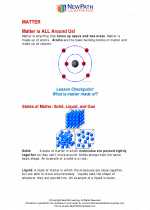
 Worksheet/Answer key
Worksheet/Answer key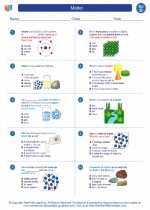
 Worksheet/Answer key
Worksheet/Answer key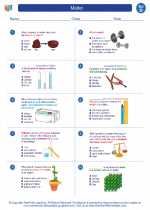
 Worksheet/Answer key
Worksheet/Answer key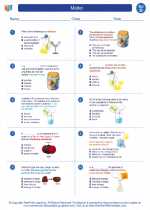
 Worksheet/Answer key
Worksheet/Answer key
 Vocabulary/Answer key
Vocabulary/Answer key
 Vocabulary/Answer key
Vocabulary/Answer key